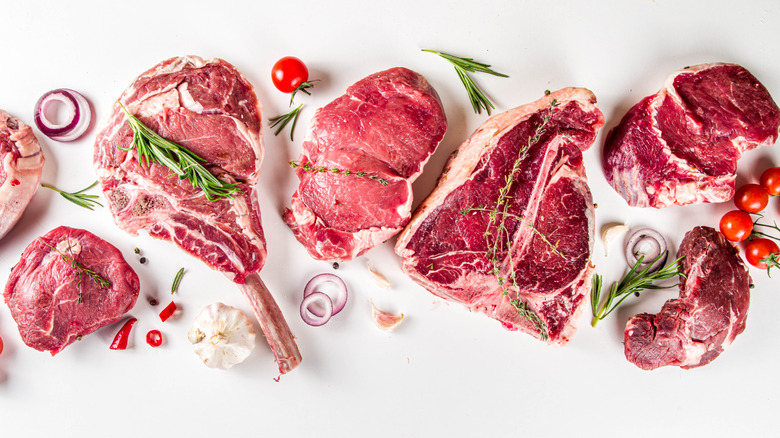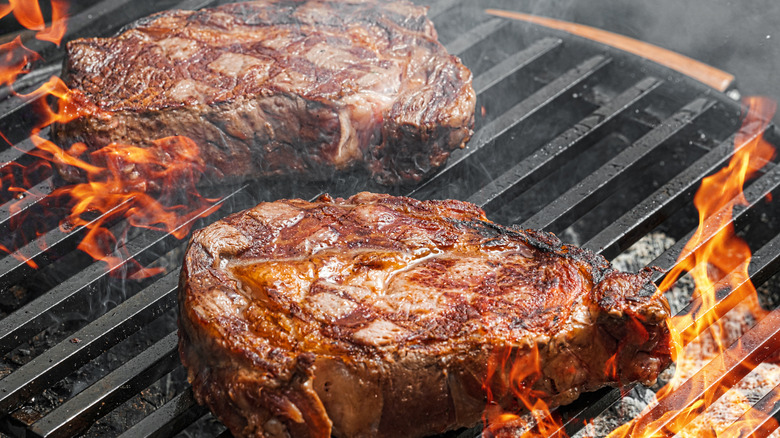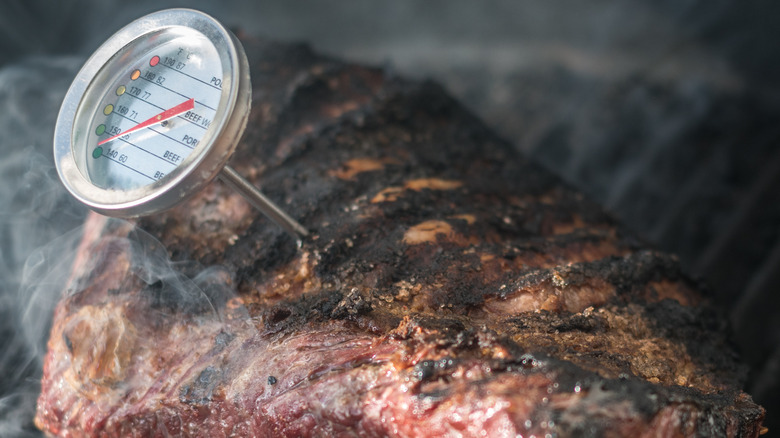What To Do If The Middle Of Your Steak Is Still Frozen After Thawing
Steaks are an American tradition. Grilled, pan-seared, and oven-roasted, steaks can be prepared in many ways. There are hundreds of recipes to achieve the most delicious steaks for you and your family. Affordable cuts offer lower-cost ways to cook a huge pot roast for cold winter days and eye of round for individual servings to grill on a warm summer evening. For even more affordable steaks, ask your butcher for family packages to save money when buying in bulk.
One trick to great steaks is to defrost the meat completely in your refrigerator after taking it out of the freezer. But some days, you have last-minute additions to your dinner, like when your son asks to bring a friend or two over after a friendly game of backyard football. Usually, it takes 24 to 36 hours to thaw steaks after putting them in the fridge, according to Real Simple. But there is a faster method if you need to add a steak to the grill right before you cook them.
Just cook steaks for a few more minutes
You can still have delicious steaks with a slightly frozen middle and a slightly longer cooking time. Real Simple says you can thaw a steak using a zipper bag submerged in a cool water bath for half an hour. The middle of the steak might still have some stiffness to it; however, that's totally fine. All you need to do is cook the steak a bit longer, usually just two or three minutes, until it's done, and your family will have perfect steaks for dinner.
You can actually cook steaks when they're still frozen. Because the moisture is locked in the meat as ice crystals, frozen steaks could turn out juicier. Cooks Illustrated experimented by pan-cooking thawed versus completely frozen steaks. The results showed that the frozen steaks took longer to be brought up to temp, and they were 9% juicier. You might see some gray streaks in your meat, but there is nothing wrong with the appearance. You'll still have fantastic meat when it's done cooking. Just be ready to add a few minutes to the cooking time. The reason for the extra juiciness? The outside sears before the inside of the steak thaw completely, keeping more water in the meat as it cooks.
Make sure your steaks reach the right temperature
No matter how you cook your steak, it needs to reach a minimum internal temperature of 145 degrees Fahrenheit for safety, according to the USDA. The only way to tell what temperature the meat gets to is with a meat thermometer. However, different doneness levels have lower cooking temperatures for your red meat, and some doneness levels are below the recommended safe internal temperature.
Rare steak reaches 120 degrees Fahrenheit, and the meat still has a red center. Medium-rare gets to 130 degrees without sacrificing too much juiciness, notes Omaha Steaks. Medium steak begins to reach the safe temperature range at 140 degrees Fahrenheit, and the middle has a light pink center. Medium-well is 150 degrees Fahrenheit with a very slight pink color. Well-done beef reaches a minimum of 160 degrees Fahrenheit. Although well-done steaks won't be as tender as lighter and warmer doneness levels, you can still get juicy steaks by searing the outside at high heat to seal the juices. Please make sure you do what's best for your family when cooking steaks for dinner, and, most importantly, eat well!


